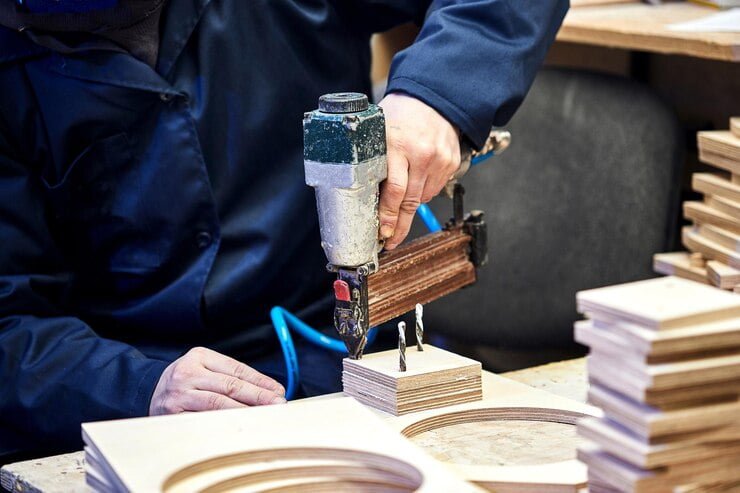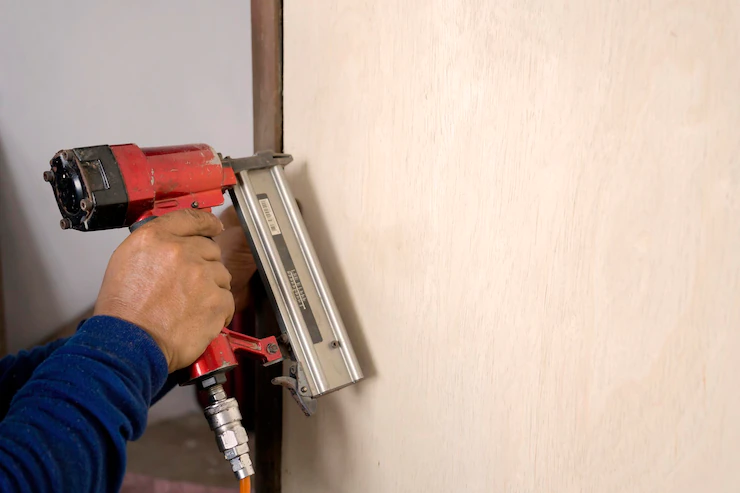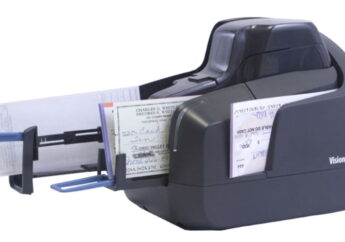Which Nailer Is Right For Your Needs?
by Arnab Dey Business Published on: 13 April 2022 Last Updated on: 18 October 2024

Nail guns are a popular power tool in the construction and carpentry industries for driving nails into wood or similar materials. There are many different sorts accessible. In this article, we’ll answer the frequently asked question “What is the distinction between first- and second-fix nailer?” as well as explain which nailing tool is best for you and why.
The Differences Between a 1st and 2nd Fix Nail Gun
The first and second fixes are used for different tasks. As a result, when selecting one, it’s critical to know which applications it’s best suited for. There are a lot of ways for you to compute the best choice for you. The following are some of their key distinctions:
What is 1st fix?
Nail guns are also known as framing nailers. They’re used for rough woodworking and construction tasks such as framing, roofing, and flooring installation.
Most nail guns today function on the same principle as gunpowder weapons, with less power and larger nails that leave impressions on wood. They are designed to be used after the project is completed to provide structural stability.
Related Resource: 4 Hazardous Power Tools and Their Safety Tips to Avoid Injury
What is a second fix nail gun?
The second category of nail guns is called finishing nailers. They’re employed near the conclusion of your project to “finish” it off. They employ smaller, more inconspicuous nails than frameless nailing guns, making them ideal for delicate inside work where a clean finish is required.
A second fix nailer is typically used for doors and skirting boards where you don’t want the nails to be visible. Finishing nails prevent more wood from splitting and offer a nicer finish.
The first fix nailers are usually available as “straight” or “angled.” Nailers with an angle are superior for working in difficult-to-access areas.
Most contractors will need both types of nailer, with a framing nailer for the more difficult starting activities and a finishing nailer to complete it off.
What’s the Difference Between a Brad and Finishing Nailer?
A finishing nailer is a type of nail gun. The main ingredient is the nails. The name “brad nailer” refers to the tool’s nails. Brad’s nails are small, thin finishing nails with tiny heads that enable them to firmly embed themselves into the wood.
Brad nailers come in a variety of shapes and sizes. Electric or pneumatic-powered scooters are your best bets. Look for options that use lithium-ion battery packs, electric motors, or both.
A brad nail gun requires 18-gauge nails, whereas a standard finish nailer demands 16-gauge or 15-gauge nails. The head of finishing nailers can accommodate larger nails, but the hole created will be small and easy to fill.
Related Resource: Acres and Miles: Benefits of Investing in Quality Construction Equipment
When to Use a Brad Nailer?
A brad nailer is a tool that may be used by just about anybody who needs to fasten wood without using screws or pre-drilling. Brad’s nails are commonly used by cabinetmakers and joiners while they wait for the glue to dry.
The workpiece may be kept in place while leaving only a small, easily-filled hole because brad nails are frequently fired as soon as waiting for glue to cure.
Who Should Use a Finishing Nailer?
Brad’s nails aren’t capable of retaining all sorts of finishing components. For example, when installing heavy molding.
In this situation, you’ll need a finishing nailer rather than a regular one since the size of the nail it fires is different. To put it another way, the larger the final piece, the larger the nail you’ll require to attach it.
Read Also:





































































































